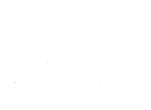Frequently Asked Questions About Drywall
What is Drywall?
Drywall has several different names, such as wallboard, gypsum board, or Sheetrock® Brand panels. It is made from a mineral called gypsum, which is naturally found in sedimentary rocks. To make drywall, processed gypsum is pressed between two sheets of thick paperboard backing.
Where is drywall used?
Drywall is only used on the interior walls of houses and buildings. It cannot be used for exterior applications, as it cannot stand up to outside weather. Drywall is an ideal interior building material, as it is fast to install, durable, and can be repaired with relative ease when damaged. Drywall is also great because of its fire-resistant properties—gypsum is non-combustible and does not burn easily.
Why is drywall called drywall?
Before drywall, plaster was the prevailing method of building walls. The material was installed wet and took an extremely long time to dry. Each layer needed to dry completely before the next one could be added. This made the process long and arduous. The name “drywall” came about to differentiate the new product from plaster, because unlike plaster, drywall installations do not need water.
When walls were plastered, other construction often had to stop until the walls were completely dry. When drywall entered the construction industry, wall installations became faster. Plaster soon became obsolete. Note: In certain parts of the country, such as Massachusetts, plaster is still used in wall construction.
Why is drywall sometimes called Sheetrock?
Sheetrock is a registered trademark of the USG Corporation for their brand of drywall panels. A couple of chemicals allow the Sheetrock formula to be patented. Otherwise, there is almost no difference between Sheetrock and other drywall panels. They all can be used for wall and ceiling installations.
How big a drywall repair can I handle myself?
Not all drywall damage requires expert help. As a general rule, any damage under 6 inches can be a DIY repair, following the steps in our Drywall Repair article. However, larger holes need the expertise of a professional, who has all the necessary tools, including an electronic stud finder, drywall saw, and inside corner knife.
Can damaged drywall be recycled once it has been removed?
Yes, it usually can. You may have to do a little research online to find a recycling transfer station in your area that will accept it, especially if it contains asbestos. Note that moldy drywall cannot be recycled and should be handled and disposed of with care. We advise that you wear rubber gloves, eye goggles, and a respirator during removal. Mold-damaged drywall should always be placed in well-sealed plastic bags before disposal.

